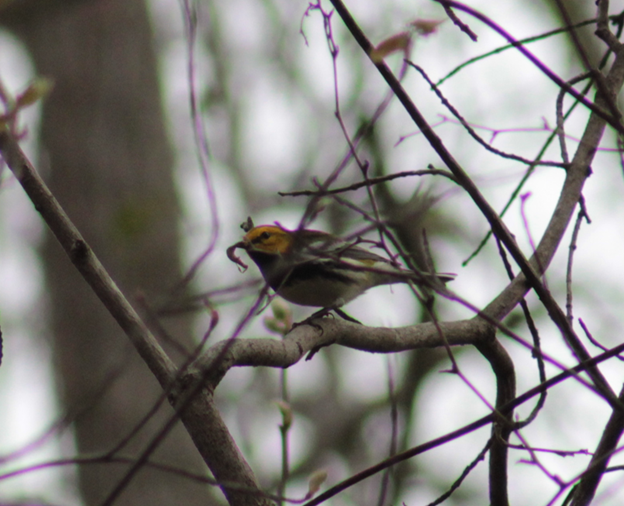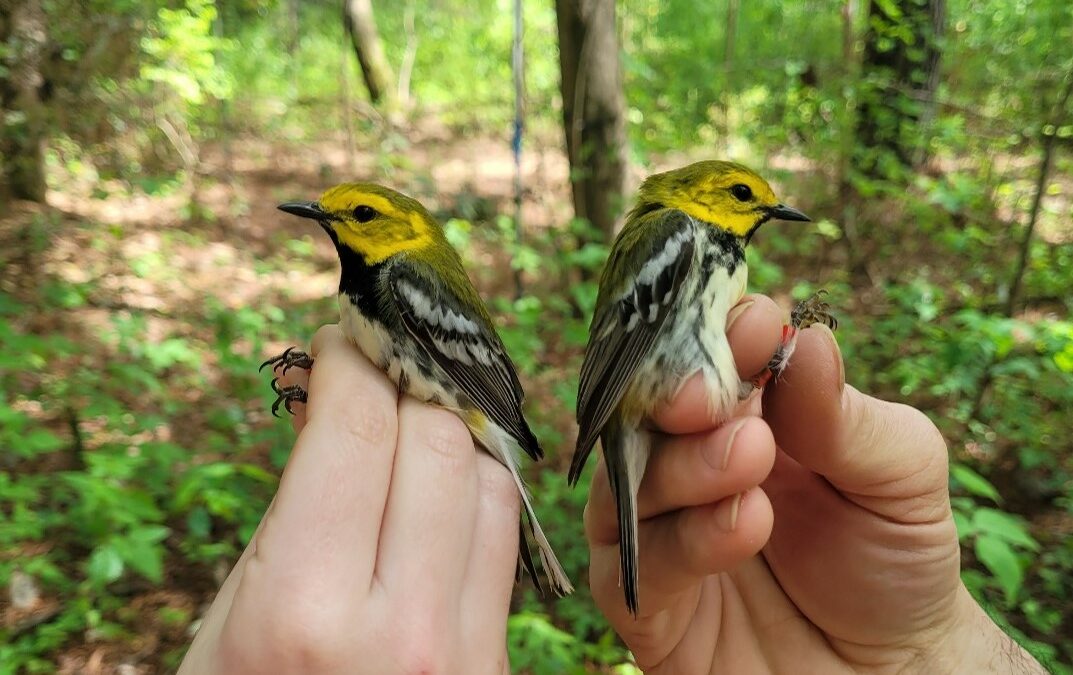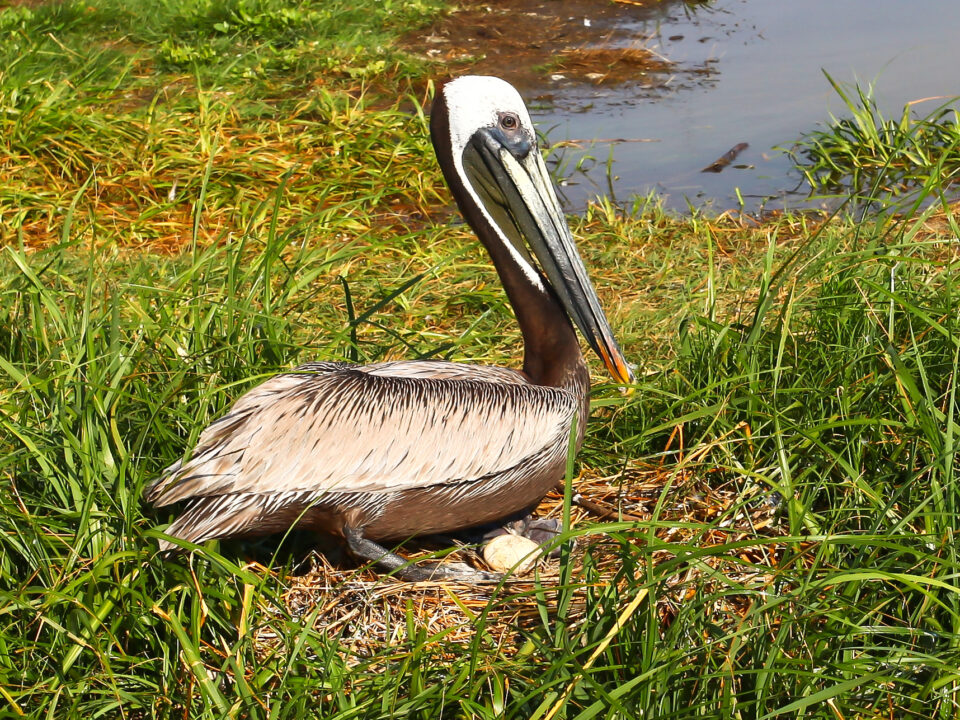Exploring the Last Strongholds of Wayne’s Warbler

2025 Field Season to investigate osprey metapopulation dynamics in Chesapeake Bay
April 5, 2025
Winter Habitat Use of Marsh Sparrows in Georgia
April 5, 2025By: Chance Hines
4/1/2025
CCB recently began the second year of a Wayne’s warbler survey in Virginia. Waynes’s warblers are a distinct form of black-throated green warblers with very narrow habitat requirements. They rely on mature forests, most often adjacent to mid-Atlantic swamplands. The value of timber found in these forests and the lands potential to support agriculture led to the destruction of what was once a large intact ecosystem. The widespread logging of these forests predated surveys for Wayne’s warblers, or even the recognition of a distinct subspecies during the early 20thcentury, so it is not clear how widespread and numerous the population once was.
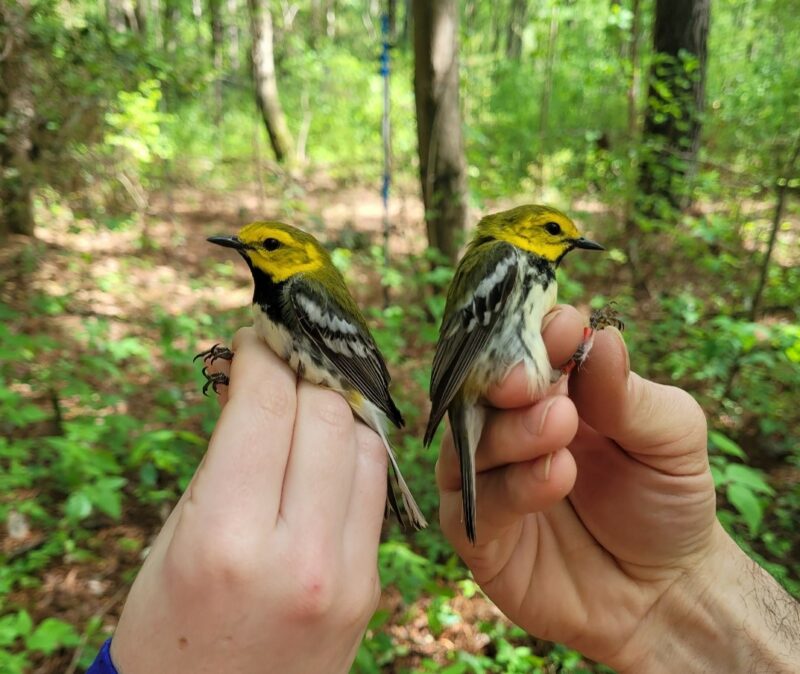
Fortunately, a large chunk of land has been protected from logging for nearly a century at the Great Dismal Swamp Wildlife Refuge. While much of the land was logged between the 18th and early 20th century, the forests have been allowed to mature over the last century. During the 2024 breeding season, CCB’s survey efforts identified wide swaths of forest within the refuge that continue to support breeding Wayne’s warblers. These findings highlight the importance of the refuge as a critical stronghold for the species, but they also raise questions about whether additional populations persist outside its boundaries.

Building on last year’s effort, CCB is exploring more remote areas outside the refuge during 2025, hoping to locate additional breeding sites. However, finding mature forests similar to those within the refuge is challenging. Many remaining tracts of old-growth habitat are small, fragmented, and isolated, conditions that likely deterred historical logging efforts. These pockets of forest are surrounded by swamplands and tributaries of the Northwest, North Landing, and Chowan Rivers. To access these remote sites, CCB staff use boats, kayaks, and long abandoned trails, venturing deep into some of the most inaccessible parts of the landscape.
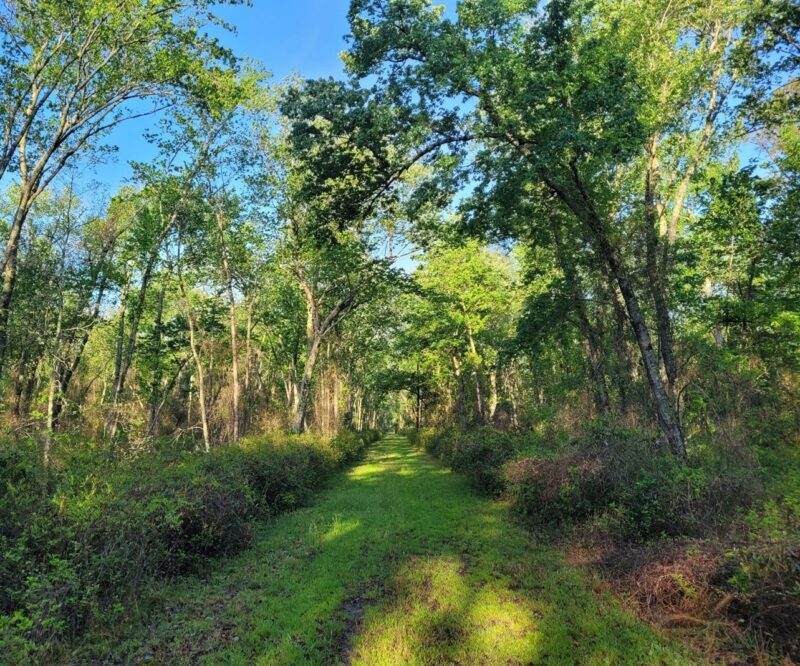
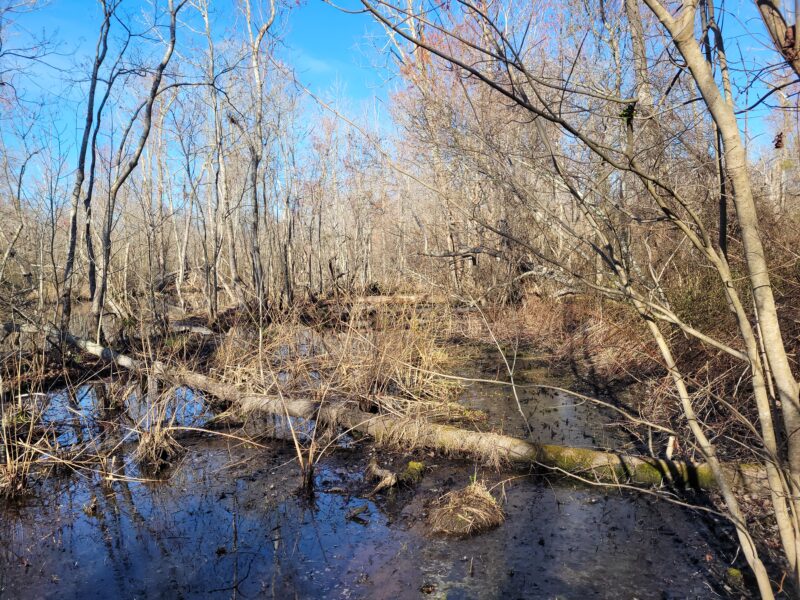
So far, the 2025 survey effort outside the refuge has only located Wayne’s warblers in forests along and nearby the Northwest River, which flows eastward from the Great Dismal Swamp into North Carolina’s Currituck Sound. Additionally, relatively few birds have been observed at these locations compared to hot spots within the large contiguous patch of forest found in the refuge. These findings raise important conservation questions: Are these small, isolated patches of forest sufficient to support viable populations, or do the warblers primarily persist in larger, contiguous tracts like those in the refuge? As surveys continue, CCB hopes to uncover more about this elusive warbler’s range and habitat needs. Understanding where Wayne’s warblers persist and what factors influence their distribution will be critical for guiding future habitat protection and management efforts. With much of their original range already lost, ensuring the survival of this unique subspecies will require targeted conservation strategies that prioritize the protection and restoration of mature coastal forests.
